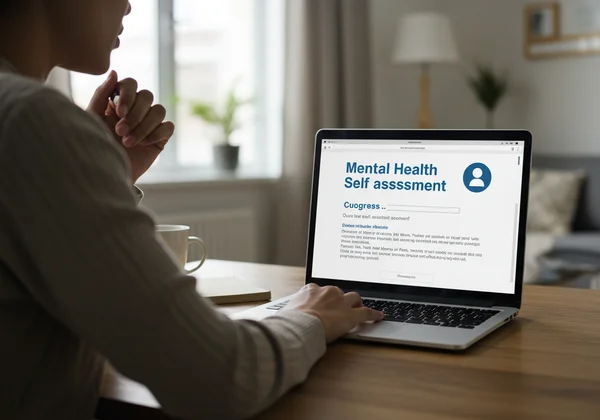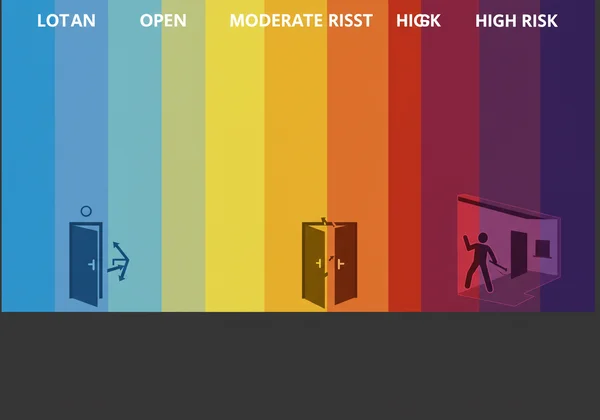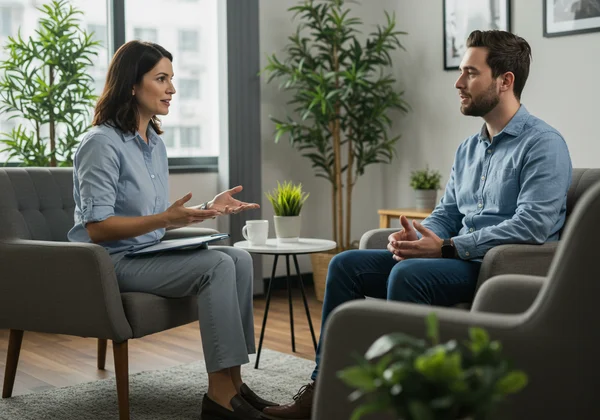Agoraphobia Test Results: Your 5 Next Steps & Action Plan
Just finished your agoraphobia test? Taking that step toward self-understanding is a significant and courageous one. It's completely natural to feel a mix of emotions right now – perhaps relief at having a name for your feelings, anxiety about what comes next, or even confusion. This guide is designed to empower you with clarity. We will help you understand your agoraphobia test results and provide a clear roadmap of five actionable steps to take on your journey. How do I tell if I'm developing agoraphobia? Answering this question for yourself is the first step, and you've already taken it by seeking information. Now, let's explore what follows. If you haven't taken the assessment yet, you can take the first step now.

Understanding Your Agoraphobia Test Results Clearly
The results from a self-assessment are not a formal diagnosis, but they are a powerful tool for reflection. They provide a snapshot of your current experiences and can help you articulate feelings that might have been difficult to put into words. Think of your results as a compass, pointing you in the direction of greater self-awareness and potential pathways for support.
What Your Score Means: Low, Moderate, or High Risk
Your results likely indicate a risk level, such as low, moderate, or high. Here’s a general way to interpret these symptom levels:

- Low Risk: This might suggest that while you experience some anxiety in certain situations, it may not significantly align with the common patterns of agoraphobia. However, any level of discomfort is valid and worth exploring if it impacts your well-being.
- Moderate Risk: This indicates that your responses show a noticeable overlap with the symptoms of agoraphobia. You may be actively avoiding certain places or situations due to fear, and this could be impacting your daily life. It’s a strong signal to pay closer attention to these patterns.
- High Risk: A high-risk score suggests that your experiences are very consistent with the challenges of agoraphobia. You might be facing significant fear related to leaving your home, being in crowds, or using public transport, leading to considerable avoidance behaviors.
Remember, this score is a starting point. It's a piece of data to help you understand your own mind, not a label to define you.
Is Agoraphobia a Spectrum? Recognizing Nuances
It's crucial to understand that agoraphobia, like many mental health conditions, exists on a spectrum. There isn’t a simple "on" or "off" switch. One person might feel intense panic on a crowded bus but be perfectly fine in a wide-open park. Another may be able to go to a familiar local shop but find the idea of a large supermarket overwhelming. Your personal experience is unique. Recognizing these nuances is empowering because it allows for a more compassionate and personalized approach to your recovery journey.
Seeking Professional Guidance: Your Next Steps After Assessment
Your test results can be the perfect catalyst for a conversation with a healthcare professional. Sharing this objective information can make it easier to start a dialogue and ensure you are heard. This is often the most critical step toward finding effective, long-term strategies.
Preparing for a Conversation with a Doctor or Therapist
Walking into a doctor's office can be intimidating. Use your results from the confidential self-assessment to prepare. Write down specific examples of situations you fear or avoid. Note any physical sensations you experience, like a racing heart, dizziness, or shortness of breath. The more specific you can be, the clearer the picture you can paint for a mental health professional. This preparation helps ensure your concerns are taken seriously and understood correctly.

Understanding Potential Diagnoses: What to Expect
A professional will conduct a thorough evaluation, which may involve more detailed questions to understand the full context of your experiences. They will work to differentiate agoraphobia from other conditions with overlapping symptoms, such as Panic Disorder (which often co-occurs with agoraphobia), Social Anxiety Disorder, or Post-Traumatic Stress Disorder (PTSD). Receiving a formal diagnosis can feel validating and is the gateway to evidence-based agoraphobia treatment options like therapy and, if appropriate, medication.
Immediate Self-Help Strategies for Managing Symptoms
While professional guidance is key, there are immediate actions you can take to begin managing your symptoms and building resilience. These strategies can help you feel more in control and serve as a foundation for your recovery.
Simple Coping Mechanisms You Can Start Today
When feelings of panic or anxiety rise, having tools at your disposal is invaluable. Practice these simple coping mechanisms:

- Diaphragmatic (Belly) Breathing: Inhale slowly through your nose for four counts, hold for four counts, and exhale slowly through your mouth for six counts. This calms the nervous system.
- Grounding Techniques: Focus on your five senses. Name five things you can see, four things you can feel, three things you can hear, two things you can smell, and one thing you can taste. This pulls your focus away from anxious thoughts and into the present moment.
- Mindful Observation: Acknowledge your anxious thoughts without judgment. Imagine them as clouds passing in the sky. You see them, but you don't have to get carried away by them.
The Power of Small Victories: Gentle Exposure Principles
The idea of confronting fears can be terrifying, but the principle behind exposure therapy is about taking tiny, manageable steps. Can you be agoraphobic and still leave the house? Absolutely. For many, recovery starts with small, planned excursions. This could mean simply stepping onto your porch for five minutes, walking to the end of your driveway, or sitting in your car. The goal is not to eliminate fear instantly but to teach yourself that you can tolerate the discomfort and that the feared outcome doesn't happen. Celebrate every small victory.
Building a Robust Support System
You do not have to navigate this journey alone. Connecting with others is a fundamental part of healing and provides encouragement when you need it most. A strong support system can make all the difference.
Involving Family and Friends: How They Can Help
It can be hard for loved ones to understand what you're going through. Share this article or other resources with them. Explain that your avoidance isn't about them but about the fear you experience. Let them know how they can help—perhaps by accompanying you on a short walk or simply by offering a listening ear without judgment. Their patience and support are invaluable assets.

Exploring Online Communities and Peer Support
In today's digital world, support is often just a click away. Finding an online forum or support group for people with agoraphobia can be incredibly validating. Hearing from others who share similar experiences can combat feelings of isolation and provide practical tips and encouragement. It’s a safe way to connect with a community from the comfort of your home.
When to Re-evaluate and Continue Your Journey
Recovery is not a linear path; it's a process with ups and downs. Continuously checking in with yourself and recognizing your progress is essential for long-term success.
Tracking Progress and Recognizing Triggers
Keep a simple journal to note your achievements, no matter how small. Did you walk to the mailbox today? Write it down! Also, use it to identify specific triggers that increase your anxiety. Understanding what causes your symptoms to flare up is the first step in developing strategies to manage those situations. You can even use our tool periodically to understand your symptoms and track how your responses change over time.
The Importance of Ongoing Care and Self-Compassion
Finally, be kind to yourself. There will be good days and challenging days. On difficult days, practice self-compassion instead of self-criticism. Remind yourself that you are doing your best and that healing takes time. This journey is about progress, not perfection. Continue to use your coping strategies, lean on your support system, and stay connected with your healthcare provider.
Your Journey Starts Now: Embrace Each Step with Confidence
Your agoraphobia test results are a signpost, not a final destination. They have illuminated a path forward, and now you have a map with five clear steps to guide you. From understanding your results to building a support system, each action you take is a powerful move toward regaining control and living a fuller life. Embrace this journey one step at a time. The courage you've shown by seeking answers is the same courage that will carry you forward.
Ready to explore further or get your initial insights? Try our free tool today and take the next step on your path to self-understanding.
Frequently Asked Questions About Agoraphobia Test Results
How do you test for agoraphobia officially?
An official diagnosis is made by a qualified mental health professional, such as a psychiatrist or psychologist. They use diagnostic criteria from manuals like the DSM-5, conducting a comprehensive clinical interview to understand your symptoms, their severity, and their impact on your life. An online tool like our agoraphobia screening test is an excellent first step for self-assessment but cannot replace a professional evaluation.
What are the different levels or types of agoraphobia?
Agoraphobia is best understood as a spectrum of severity. Some people may have mild agoraphobia, feeling anxiety in specific situations (like flying) but functioning well otherwise. Others may have severe agoraphobia, finding it difficult to leave their homes at all. The condition is defined by the fear it causes, not by a rigid set of types.
Can someone be agoraphobic but still manage to leave their house sometimes?
Yes, absolutely. Many people with agoraphobia can leave their house, especially to go to "safe" zones—familiar places where they feel relatively in control. They might also be able to venture out with a trusted person. Avoidance is a key symptom, but it doesn't always mean being completely housebound.
What other conditions can be mistaken for agoraphobia symptoms?
Several conditions have overlapping symptoms. Panic Disorder is the most common, as panic attacks often trigger agoraphobic avoidance. Social Anxiety Disorder involves fear of social situations, but the root fear is judgment, not panic or being trapped. Other conditions like Claustrophobia (fear of enclosed spaces) or specific phobias can also share some characteristics. A professional can help clarify the primary issue. For an initial look at your symptoms, get your results on our site.